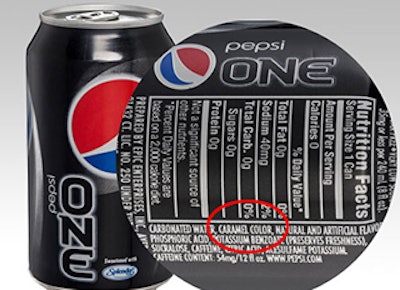
While the ingredient caramel color may sound harmless enough, even appetizing, it can contain a deadly carcinogen.
On a daily basis, nearly half of Americans over the age of six are likely exposing themselves to this cancer-causing carcinogen. Half!
Soda drinkers beware: the carcinogen is a popular ingredient found in many of your favorite sugared beverages.
Pepsi, Coke, Root Beer, Dr. Pepper — you name it — if it contains caramel coloring, it’s highly likely to be of a major health risk.
In a new study published in the journal PLOS One, public health researchers analyzed soda consumption data in order to help characterize consumers’ exposure to the potentially carcinogenic byproduct found in many types of caramel color.
Caramel color is a common ingredient in dark soft drinks. And if you are part of the 44 to 58 percent of people who consume at least one can of soda per day, you are exposing yourself to 4-methylimidazole, or 4-MEI.
The 4-MEI is formed during the manufacturing process of some kinds of caramel color, the study says.
“Soft drink consumers are being exposed to an avoidable and unnecessary cancer risk from an ingredient that is being added to these beverages simply for aesthetic purposes,” said Keeve Nachman, PhD, senior author of the study.
Nachman is also the director of the Food Production and Public Health Program at the Johns Hopkins Center for a Livable Future and an assistant professor at the Johns Hopkins Bloomberg School of Public Health.
He explains that the high risk of public health raises questions about the continued use of caramel coloring in soda.
Previous data already shows that many sodas contain 4-MEI, but researchers aimed to pinpoint the cancer’s potential burden on the U.S. population by estimating how many Americans consume sodas on a regular basis.
The study pairs previous research from Consumer Reports, which looked at the 4-MEI concentrations in 110 soft drink samples, with population beverage consumption data from the National Health and Nutrition Examination Survey.
In the analysis, researchers found that levels of the carcinogen varied, even for the exact same type of beverage. The diet sodas, for example, contained higher or more variable levels of the compound, while others had lower concentrations of 4-MEI.
Though Consumer Reports petitioned the Food and Drug Administration to set federal limits on 4-MEI in foods and beverages last year, there is currently no limits in place, according to the news release.
Researchers also shared their findings with the California Attorney General’s office, which enforces the state’s Proposition 65 law aimed at reducing consumer exposure to toxic chemicals. Under this law, any food or beverage sold in the state that exposures consumers to more than a specific amount of 4-MEI per day requires a health-warning label.
“The new analysis underscores our belief that people consume significant amounts of soda that unnecessarily elevate their risk of cancer over the course of a lifetime,” said Urvashi Rangan, PhD, executive director for Consumer Reports’ Food Safety and Sustainability Center.
Rangan says he believes beverage makers and the government should take the necessary steps to protect public health.
Do you believe an FDA intervention to help determine the maximum levels for 4-MEI in beverages could be a valuable approach in reducing the excess cancer risk that is interconnected with 4-MEI exposure?
ENTRIES OPEN:
Establish your company as a technology leader. For 50 years, the R&D 100 Awards, widely recognized as the “Oscars of Invention,” have showcased products of technological significance. Learn more.























